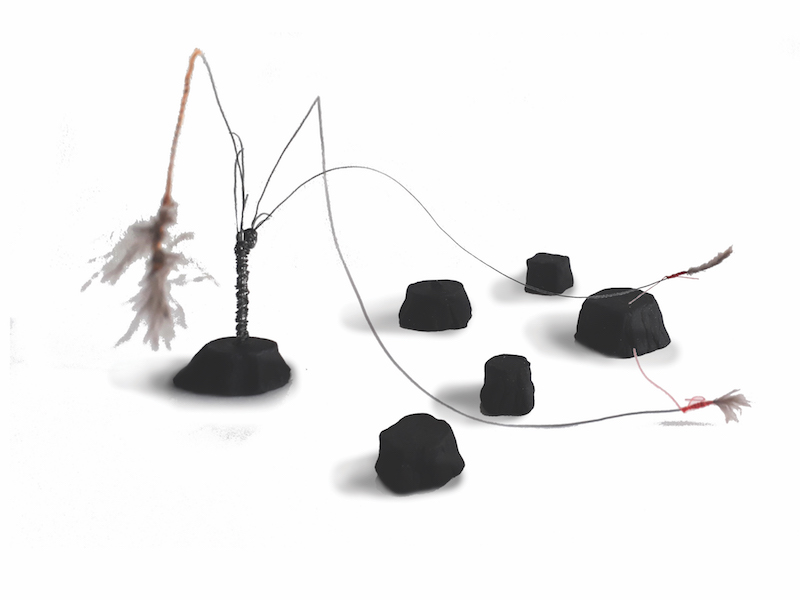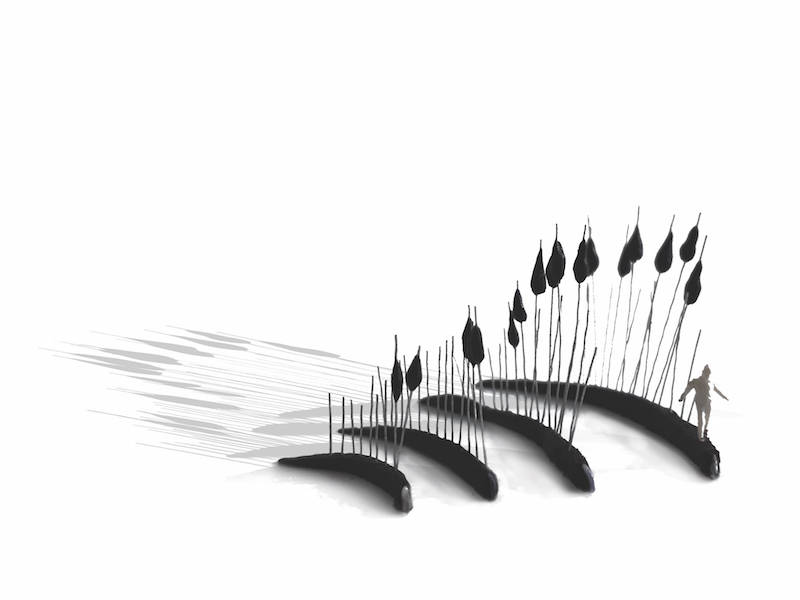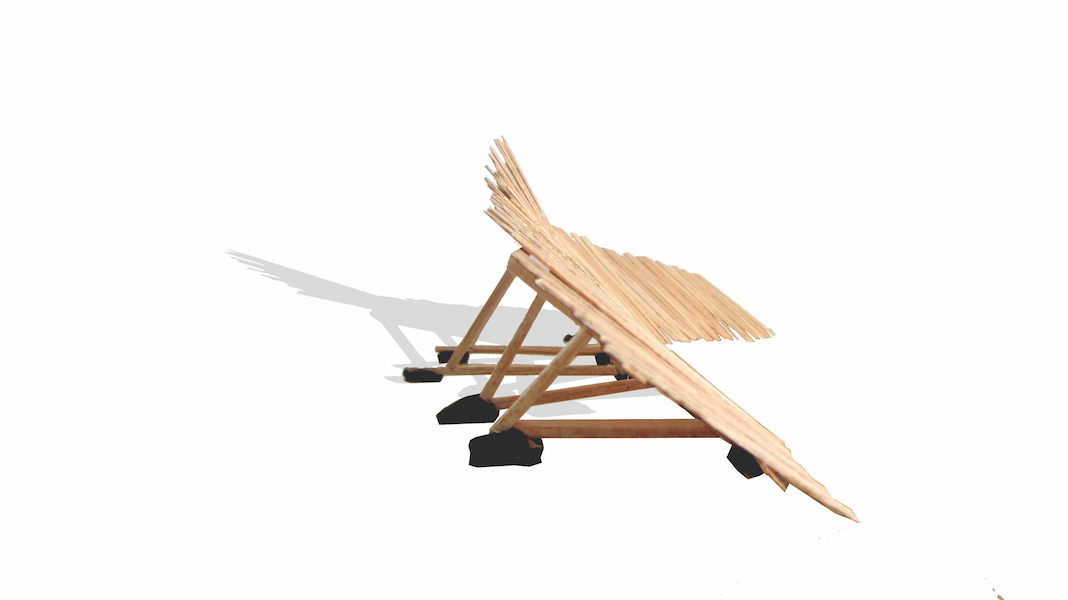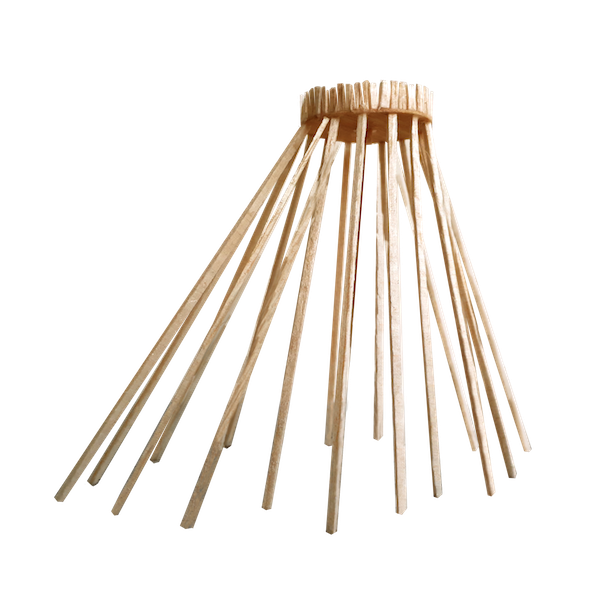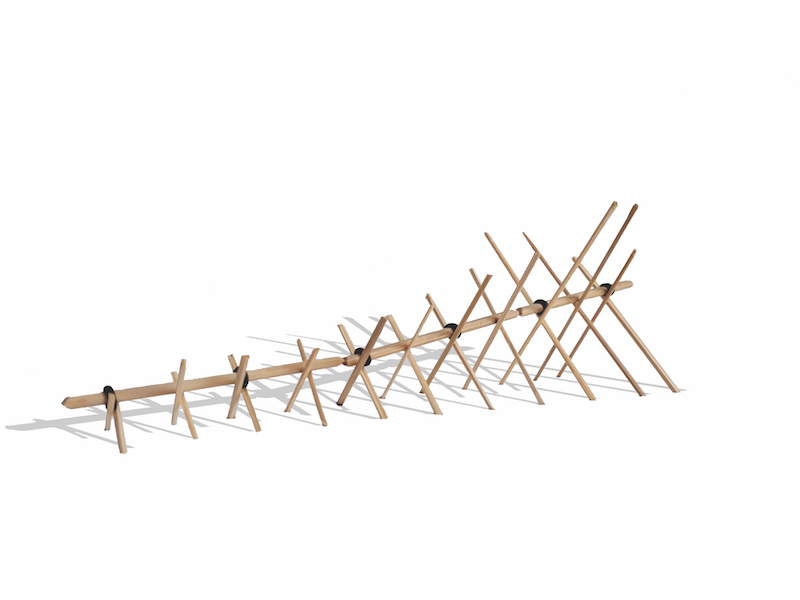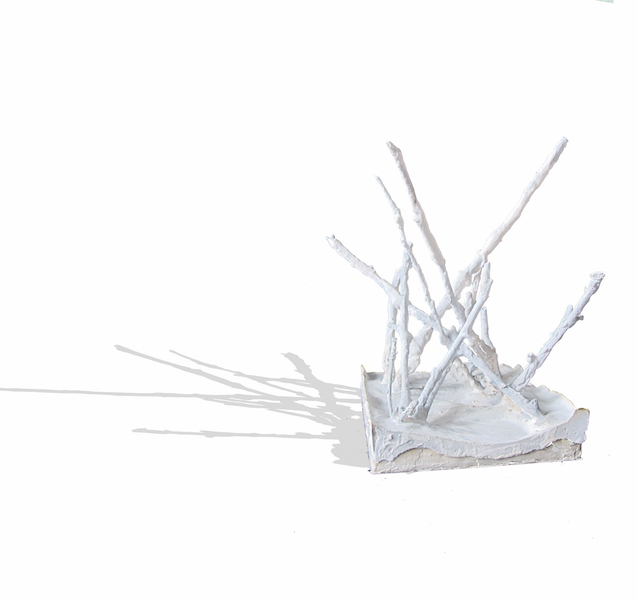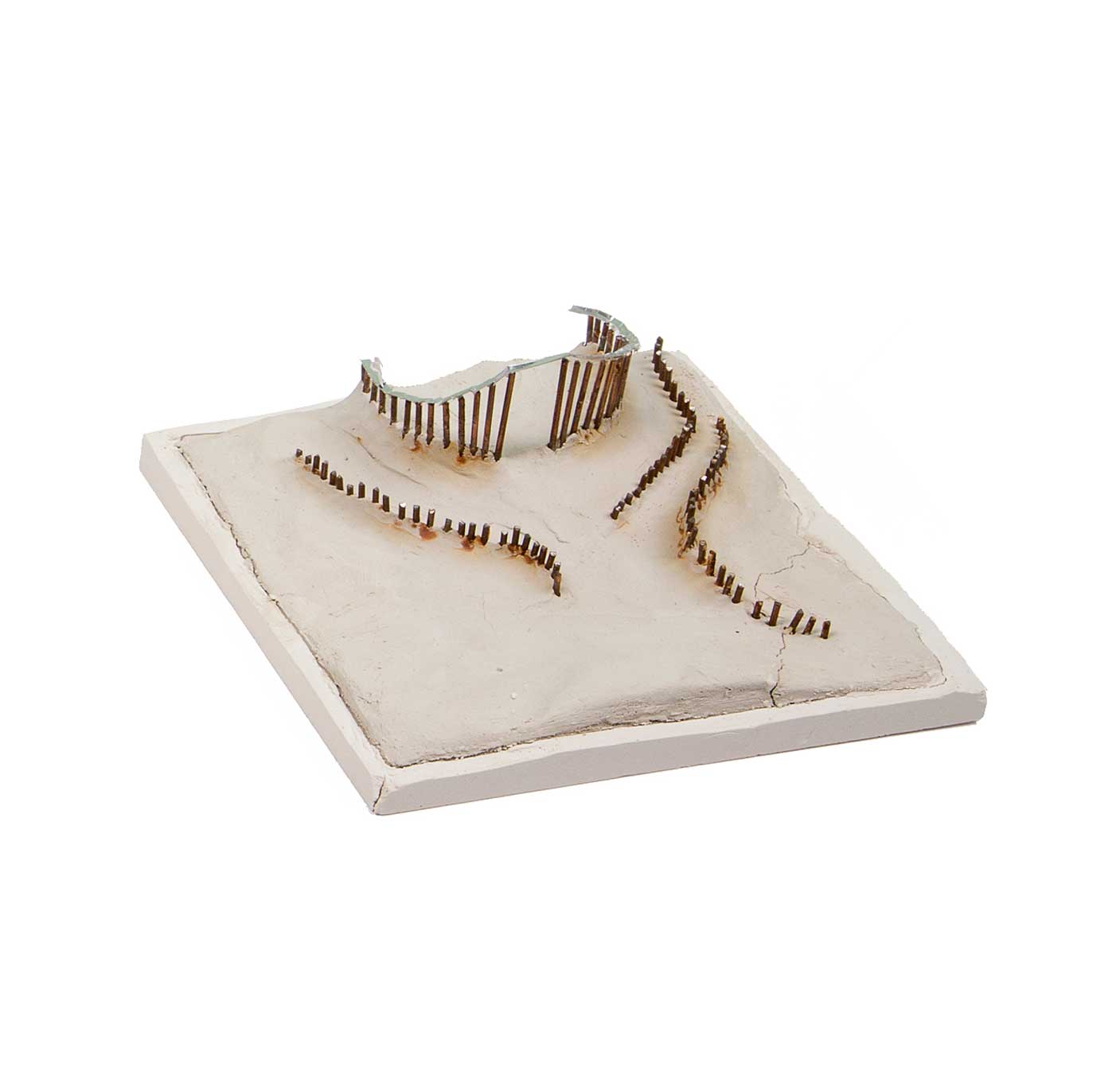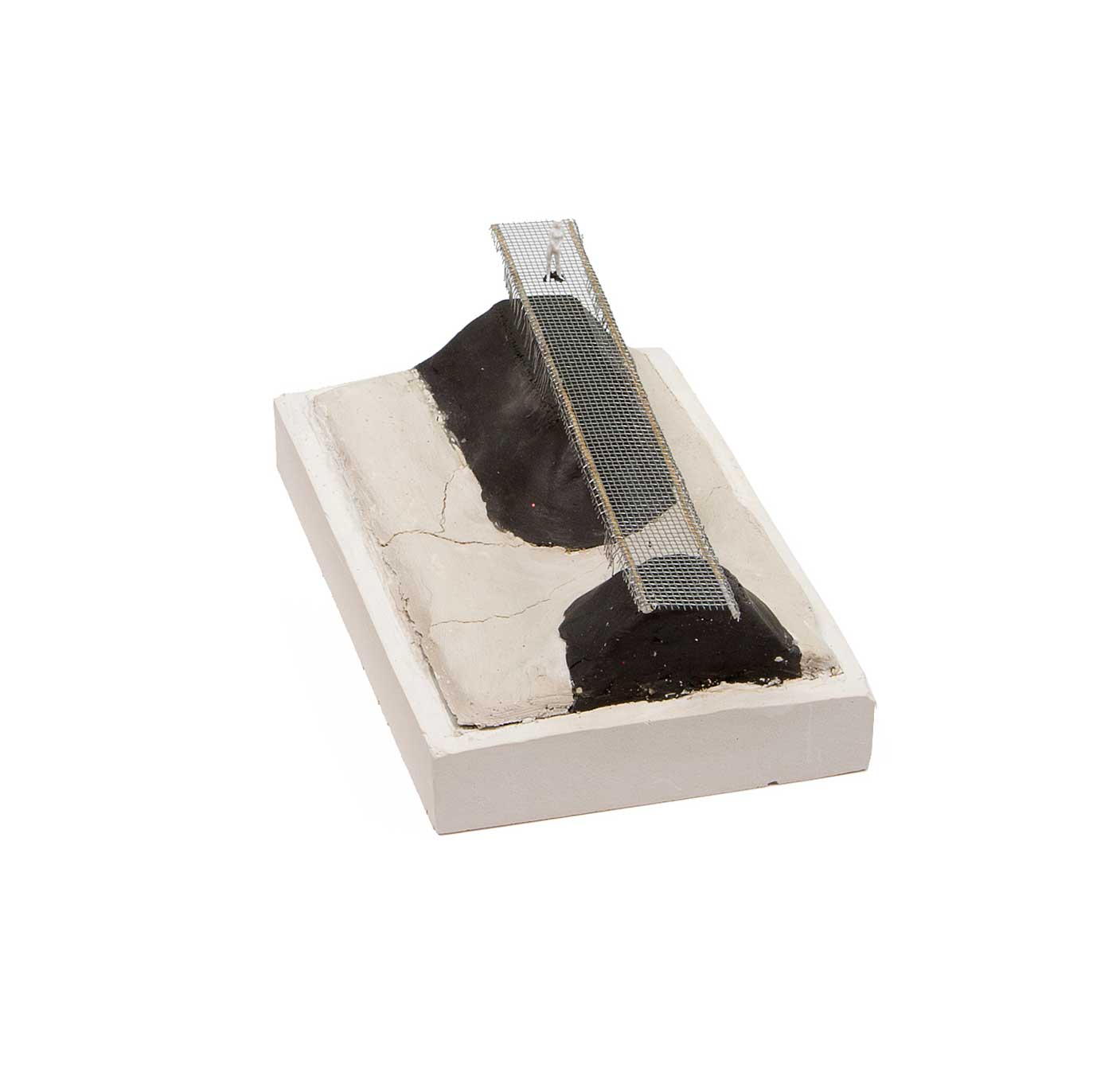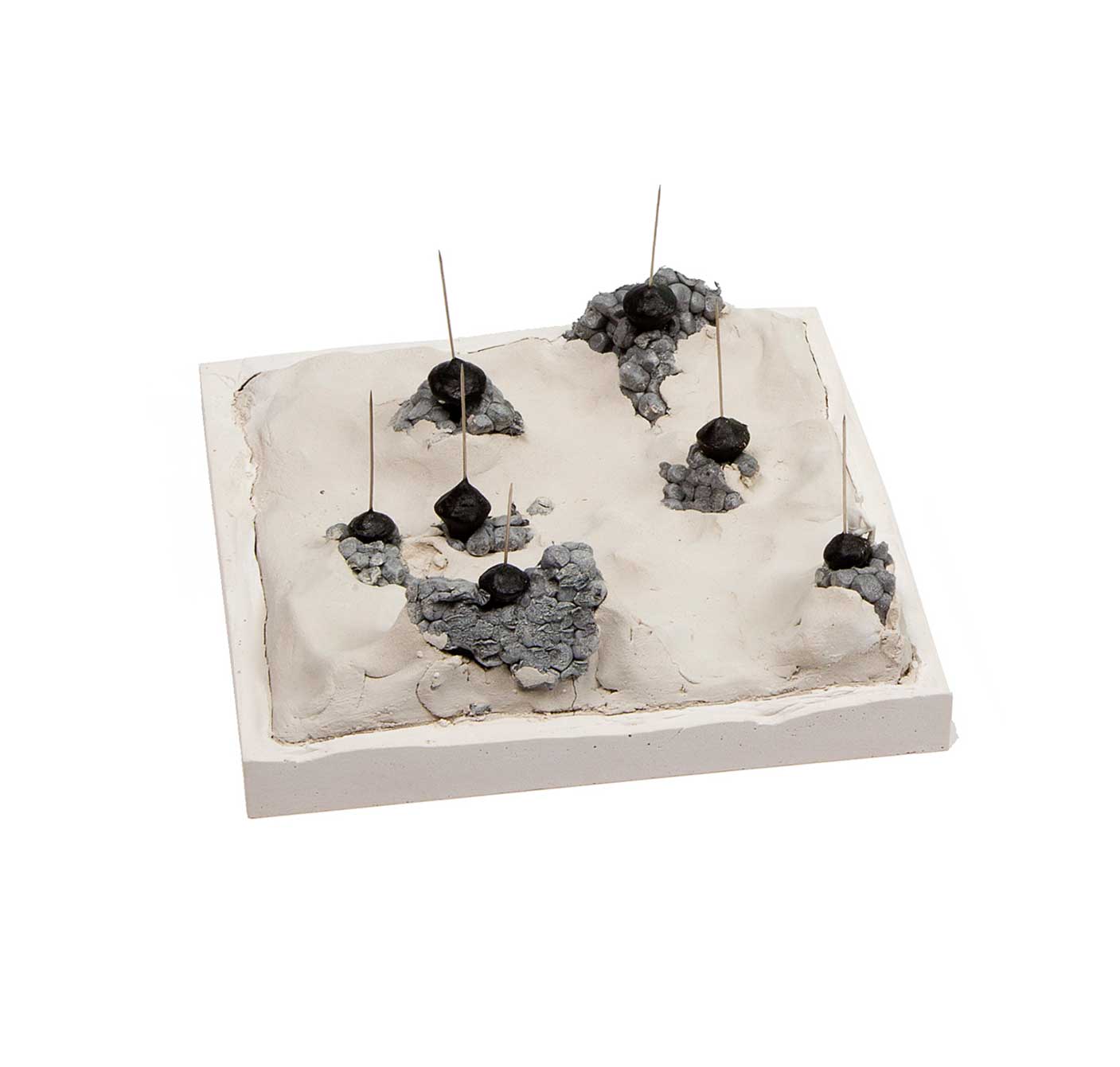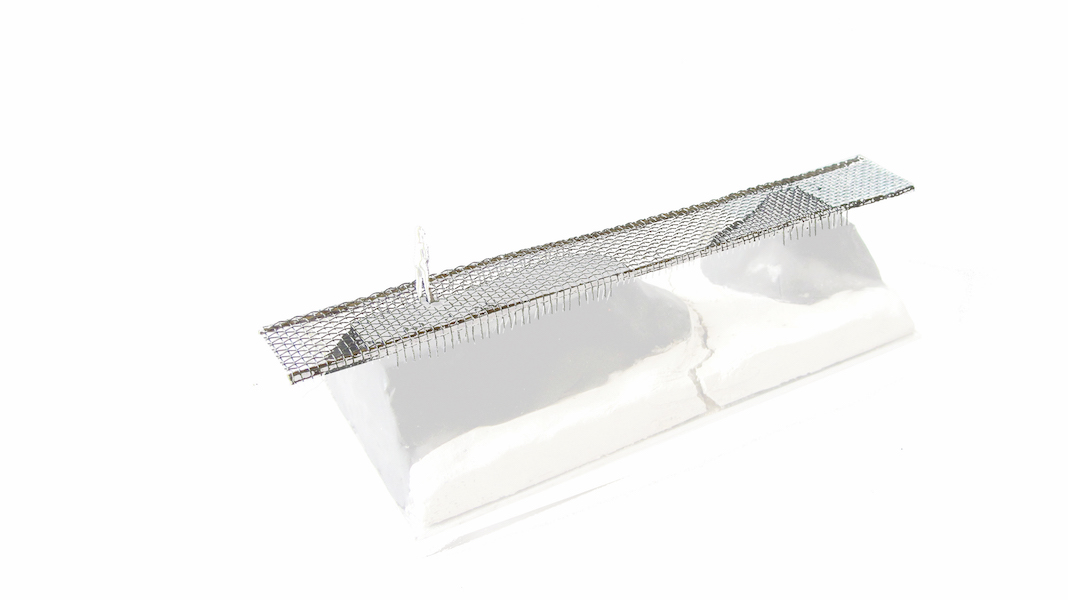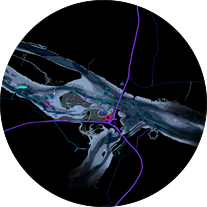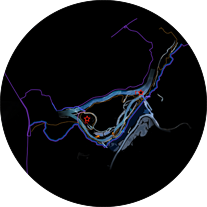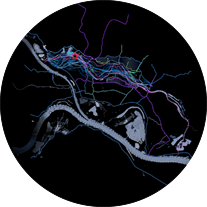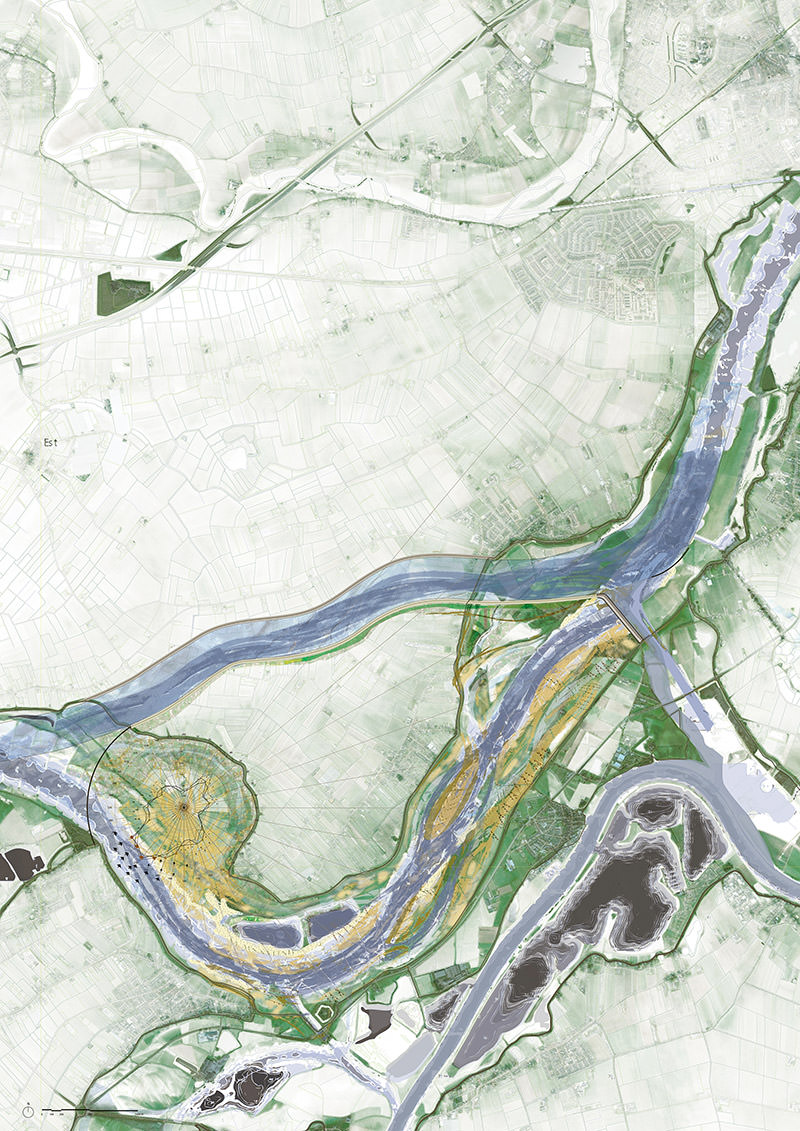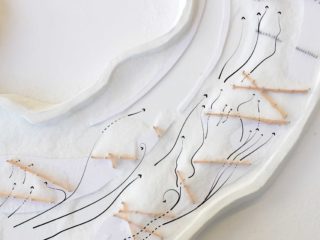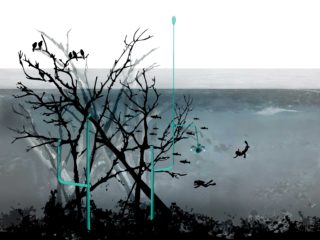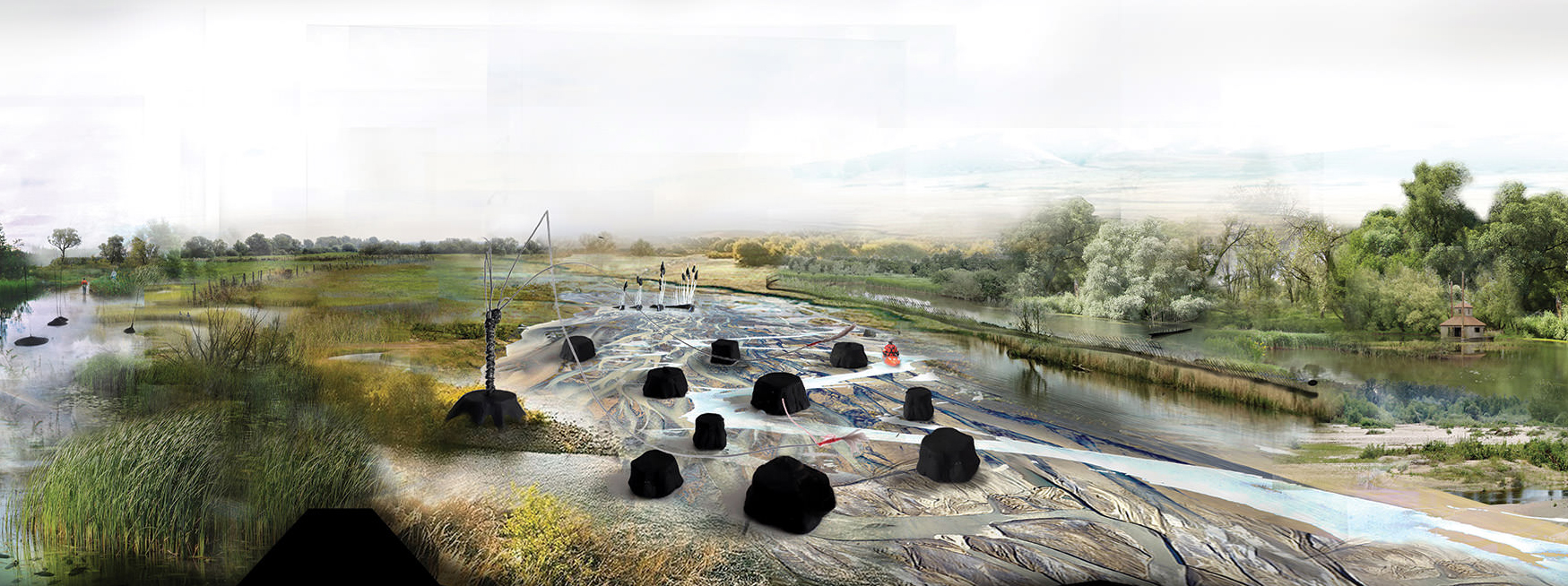
A transition in Dutch landscape design
Dutch identity is strongly tied to the ability to conquer nature – to turn an inhabitable river delta into an engineering wonder. But strong pressures from both climate change and biodiversity now cause us to rethink our traditional approach. We need to re-value the natural dynamics that have shaped our country over time.
The project Flowing Force is a future vision supported by landscaping tools called landshapers, that shape the landscape using natural forces – creating rich biotopes.
Three types of interventions
The ingredients for a rich and dynamic delta consist of three components:
- strategic interventions, linked to ongoing assignments concerning functional topics like water-safety and navigation.
- ‘landshapers’, a toolbox of small interventions activating natural forces, contributing to biodiversity and human exploration.
- Improvement of accessibility on specific locations so passers-by can experience flowing forces, without disturbing the peace.






Toolbox of ‘landshapers’
The Toolbox of Landshapers consists of a series of small interventions that can have long term effects on the landscape by strategic implementation.
These design interventions accelerate natural forces like blowing wind, flowing water or rising currents and reshape a landscape over time. The implementations are simple designs, consisting out of sticks and tree trunks, and they facilitate new forms of recreation at te same time.
For example an Underwater forest, where dead trees are being anchored underwater. It creates a new biotope for marine life and forms a bio-diverse reef for diving recreation. Or a mountain bike trail, where the hurdles are creating river dunes, because of their specific position towards the wind.




